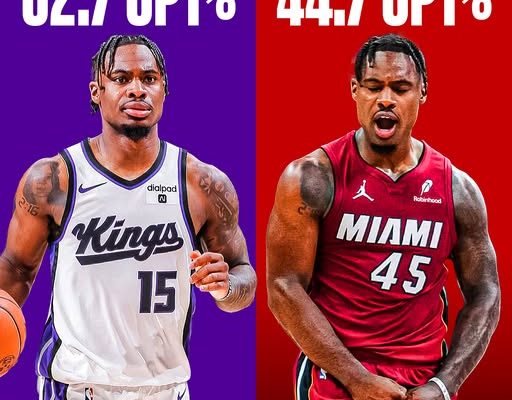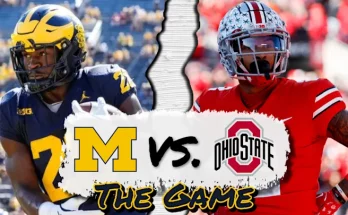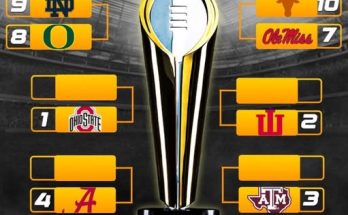Davion Mitchell’s journey from struggling sharpshooter with the Sacramento Kings to an elite three-point marksman with the Miami Heat is nothing short of remarkable. The transformation is stark and undeniable. In Sacramento, Mitchell’s shooting from beyond the arc was a glaring weakness. He connected on just 32.7% of his three-point attempts, a number that hovered below the NBA average and limited his offensive impact. He struggled to find a consistent rhythm, often appearing tentative and out of sync with the Kings’ offensive flow. Yet, since being traded to Miami, Mitchell has seemingly found a new gear, morphing into a flamethrower who is lighting up the scoreboard at an astonishing 44.7% clip from deep. This dramatic uptick in shooting efficiency has not only revitalized his career but also made him a crucial weapon in Miami’s arsenal. To understand this transformation fully, it’s important to delve into the factors behind his struggles in Sacramento, the changes he has undergone, and what this means for his future and the Heat’s prospects.
In Sacramento, Davion Mitchell arrived with high expectations as a tenacious defender and a hard-nosed competitor, known for his defensive intensity rather than his offensive prowess. Drafted with the 9th overall pick in the 2021 NBA Draft by the Kings, Mitchell was immediately embraced for his hustle and grit. However, his offensive game, especially his shooting, left much to be desired. His 32.7% three-point shooting was a red flag, especially in today’s NBA, where spacing and shooting beyond the arc are paramount. The Kings’ offense, often in flux and lacking a clear identity, did not provide Mitchell with the best environment to thrive offensively. His shot selection was sometimes questionable, his confidence seemed fragile, and his mechanics appeared inconsistent under pressure. The Kings’ offensive system also didn’t always play to his strengths, often forcing him into uncomfortable roles or off-ball positions that hindered his shooting rhythm.
Moreover, Sacramento’s roster construction meant that Mitchell’s role was primarily defensive, tasked with locking down elite guards while the primary scoring duties were placed on stars like De’Aaron Fox and Domantas Sabonis. This defensive emphasis, while a strength, sometimes worked against Mitchell developing into a reliable offensive threat. The mental toll of inconsistent shooting, combined with the pressure to contribute defensively, resulted in a player who was effective but limited in his offensive upside. Fans and analysts alike saw glimpses of potential but were often left wondering if Mitchell could ever evolve into a consistent scoring threat.
The trade to Miami marked a turning point in Mitchell’s career. The Heat, renowned for their development culture and demanding, yet supportive environment, provided the perfect setting for Mitchell to grow his game. Miami’s system under coach Erik Spoelstra emphasizes pace, ball movement, and most importantly, confident shooting. The Heat’s offensive philosophy encourages players to take high-quality shots within the flow of the offense, rather than forcing attempts. This approach seems to have unlocked something in Mitchell. Almost immediately after joining Miami, he began shooting with a newfound confidence and consistency. His deep three-point shooting percentage skyrocketed to 44.7%, a figure that places him among the elite shooters in the league.
This leap in shooting efficiency can be attributed to several interrelated factors. First and foremost is the technical refinement of Mitchell’s shooting form. Coaches and trainers in Miami worked closely with him to tweak his mechanics, ensuring a smoother release, better balance, and quicker footwork. These subtle changes have given Mitchell a more repeatable and reliable shot. Video analysis and biomechanical feedback played a key role, allowing Mitchell to see the minute adjustments needed to elevate his shot quality. This technical progress, paired with intense repetition in practice, enabled him to build muscle memory and confidence.
Secondly, the offensive system and role he occupies with the Heat play to his strengths. Miami’s offense creates more open looks for Mitchell, thanks to the movement of stars like Jimmy Butler, Bam Adebayo, and Kyle Lowry. The spacing and ball movement mean Mitchell is often coming off screens or spotting up from catch-and-shoot opportunities, ideal scenarios for a shooter to succeed. Unlike Sacramento, where Mitchell’s shot attempts were sometimes contested or forced, Miami’s design allows him to get cleaner looks within the flow of the offense. The trust placed in him by the coaching staff and teammates has also been a critical confidence booster. Feeling valued and encouraged to shoot is vital for any player looking to improve their scoring, and Mitchell’s Miami environment nurtures exactly that.
Mental resilience and maturity are other crucial factors in Mitchell’s renaissance. The player who once doubted his shot has developed a stronger mindset, learning to embrace mistakes and maintain composure. This psychological growth is often overlooked but is fundamental for consistent shooting in the NBA. Mitchell’s willingness to learn, accept coaching, and put in the work off the court has accelerated his development. His improved conditioning and focus have also contributed to maintaining his shooting form late into games, when fatigue often causes players to falter.
The results of this transformation are visible not only in Mitchell’s shooting percentages but also in his overall offensive impact. He is no longer a one-dimensional defensive specialist but a multi-faceted player who can stretch defenses, create spacing, and force opponents to respect his shot. This change forces opposing defenses to make adjustments, which in turn opens up opportunities for his teammates. The Heat benefit greatly from having a guard who can defend aggressively while simultaneously punishing defenses from deep. Mitchell’s rebirth as a sharpshooter complements Miami’s core strengths and provides new tactical flexibility.
His improved shooting has also expanded his usage and minutes on the court. Coach Spoelstra has rewarded Mitchell’s shooting prowess with increased responsibility, often deploying him in clutch situations and critical lineups. The trust is mutual; Mitchell has embraced the role and delivered consistently. His ability to knock down threes with efficiency reduces pressure on the Heat’s star players, allowing for a more balanced and unpredictable offense. This dynamic elevates Miami’s chances in close games and crucial moments, where a reliable shooter can be the difference between victory and defeat.
Looking ahead, the implications of Mitchell’s shooting improvement are far-reaching. At just 24 years old, he is entering the prime years of his career with a new identity as a legitimate scoring threat. This development could increase his value significantly, whether with the Heat or potentially in future trade discussions. Teams across the league covet players who can defend at a high level and shoot efficiently from deep, making Mitchell a rare and valuable commodity. The Heat’s ability to develop and maximize such talent speaks volumes about their organizational culture and player development strategy.
For Mitchell himself, the challenge now is to sustain and build upon this success. NBA defenses will adjust, game plans will be designed to limit his opportunities, and expectations will rise. Maintaining shooting efficiency at nearly 45% from three is difficult, and Mitchell will need to continue refining his shot selection, conditioning, and mental toughness to remain elite. Additionally, expanding his offensive repertoire beyond shooting — improving playmaking, finishing at the rim, and creating his own shot — will be important for his long-term growth as a complete guard.
Nevertheless, the trajectory is overwhelmingly positive. The contrast between the struggling shooter in Sacramento and the sharpshooting force in Miami underscores how environment, coaching, and self-belief can transform a player’s fortunes. Mitchell’s story is also a testament to perseverance and hard work. Rather than being defined by early struggles, he has evolved through dedication and adaptation. This narrative will inspire many young players who face similar challenges in their careers.
The Miami Heat’s role in this transformation cannot be overstated. Their reputation as a franchise that molds versatile, tough, and skilled players is well-earned, and Mitchell’s development adds another chapter to their legacy. The synergy between Mitchell’s work ethic and the Heat’s culture of excellence has created a perfect storm for success. It also highlights the importance of fit in the NBA — how a player’s skill set and mindset must align with the right system to flourish.
In summary, Davion Mitchell’s journey from a below-average three-point shooter in Sacramento to a blazing sharpshooter in Miami is a remarkable story of growth, resilience, and opportunity. His jump from 32.7% to 44.7% shooting from deep is a statistical leap that reflects deeper changes in technique, confidence, role, and mindset. For the Miami Heat, Mitchell’s emergence as a reliable three-point threat enhances their offensive firepower and championship aspirations. For Mitchell, it signals a new chapter as a more complete player with a bright future. His rebirth is a vivid reminder of the transformative power of environment, hard work, and belief in professional sports. As the season progresses, all eyes will be on Mitchell to see if he can sustain this level of excellence and become one of the premier two-way guards in the NBA. His story so far is a compelling blend of struggle, adaptation, and triumph that resonates well beyond the hardwood.



